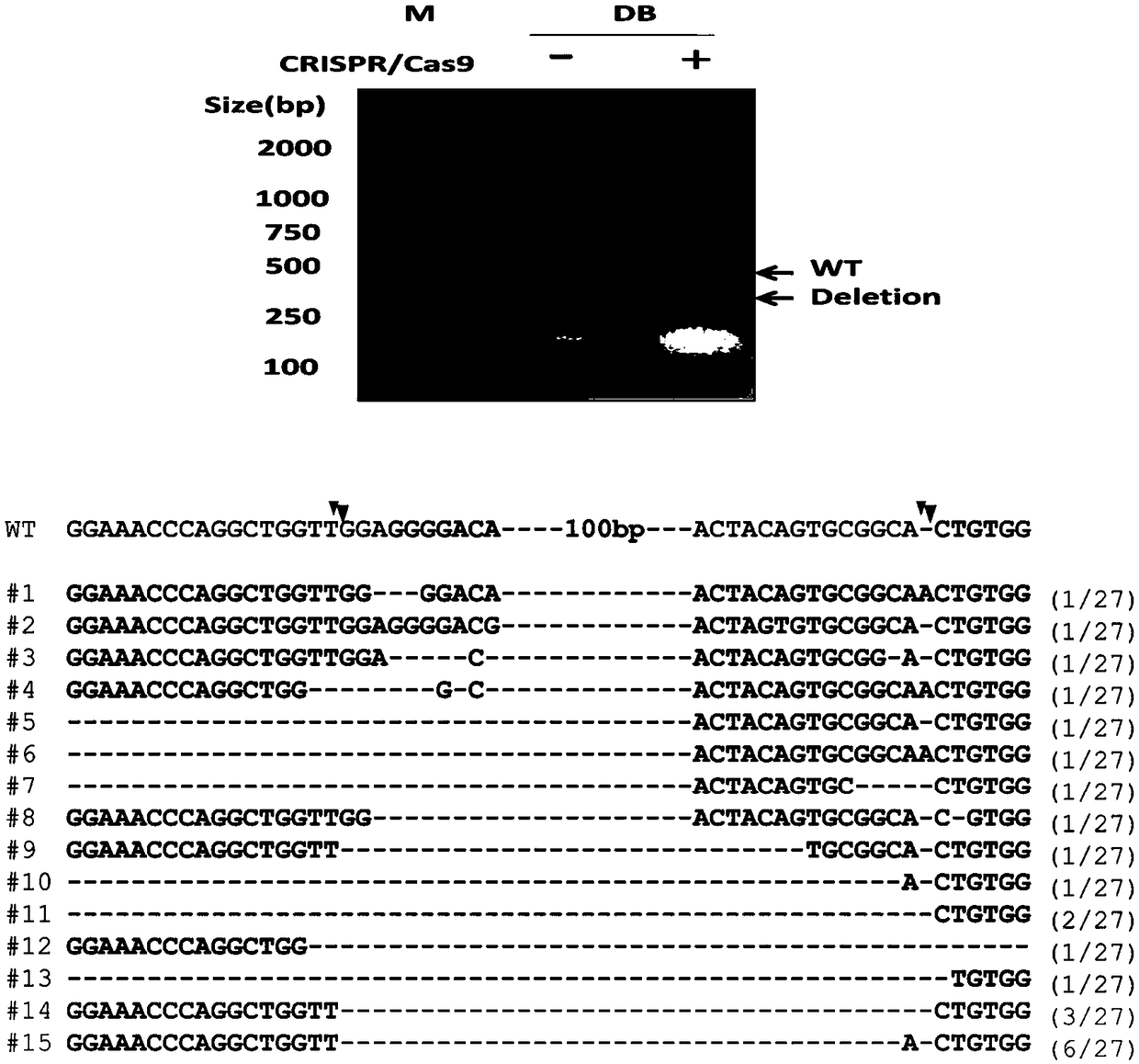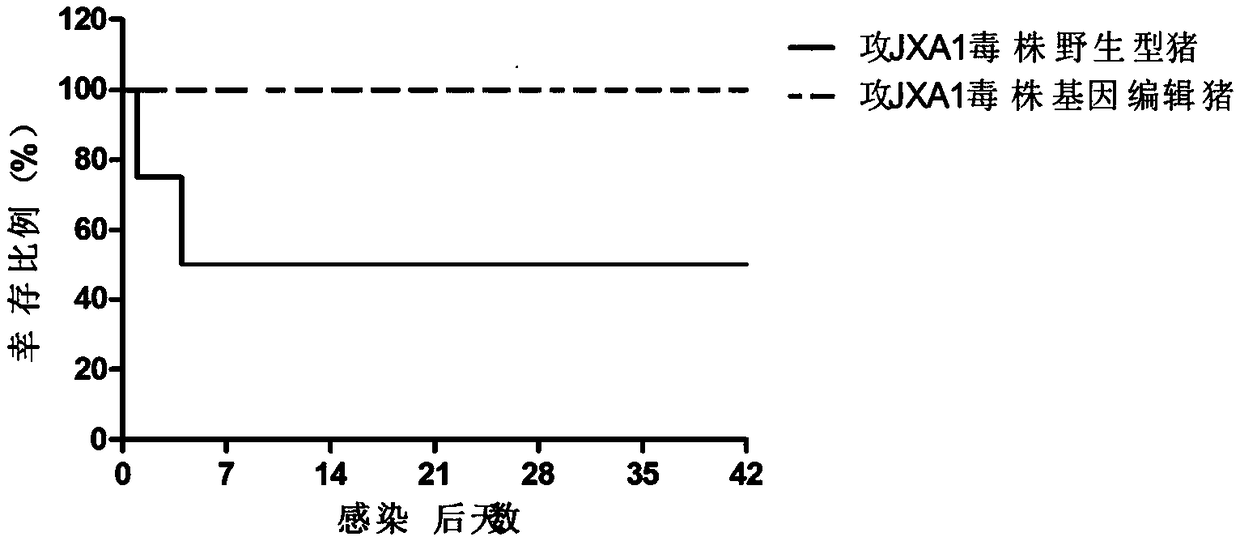Method for editing large white pig CD163 gene by using CRISPR/Cas9
A large white pig and gene technology, applied in the biological field, can solve the problems of persistent infection, lack of good vaccines and drugs, and antibody-dependent enhancement.
- Summary
- Abstract
- Description
- Claims
- Application Information
AI Technical Summary
Problems solved by technology
Method used
Image
Examples
Embodiment 1
[0025] Editing CD163 gene by CRISPR / Cas9 to prepare gene-edited cells
[0026] 1. Obtaining isolated porcine fetal kidney cells
[0027] Pig fetal kidney cells are isolated from large white pig fetal kidneys, and the pig fetal kidney cells are separated in an ultra-clean bench. Use scissors and tweezers to remove the kidney tissue of the fetus, wash the removed tissue repeatedly in 75% (v / v) alcohol and PBS with antibiotics in sequence, and cut the tissue block to a size of 1 cubic millimeter with small scissors, 1600rpm Centrifuge for 5 minutes to remove PBS, then add 20% FBS DMEM with antibiotics, gently pipette evenly, and culture in a 37°C cell culture incubator. After putting it into the cell culture box, do not move the culture dish. Three days later, it can be observed that the pig fetal kidney cells have covered the entire culture dish, and then the digestion and culture of ordinary passaged cells can be carried out.
[0028] 2. Obtaining cells containing edited CD16...
Embodiment 2
[0044] 1. Somatic cell nuclear transfer to obtain CD163 gene-edited pigs
[0045] Select ovaries with appropriate developmental stages from healthy Large White sows, extract the contents of follicles with a diameter of 3-5 mm on the surface of the ovary with a syringe, dilute the contents in TL-PVA and resuspend to form a suspension. The suspension was left standing at 37°C until the oocytes were completely precipitated, and the oocytes were sucked out and placed under a stereoscope with a pipette or a suction pipette to pick out oocytes with complete pericytes. The selected healthy oocytes were put into TCM-199 containing 10% (weight percent) follicular fluid, FSH, LH, EGF and cultured for 22 hours. The oocytes were then transferred to TCM-199 containing 10% (weight percent) follicular fluid and EGF with a pipette or a mouth pipette to continue culturing for 22 hours. After 44 hours of culture and maturation, the healthy mature oocytes that have discharged the second polar b...
Embodiment 3
[0052] Example 3: In vivo challenge experiment of anti-PRRS cloned pigs
[0053] 1. 16 piglets aged 4-6 weeks (8 gene-edited pigs + 8 wild-type pigs, earmarked) were divided into two challenge rooms (for two different PRRSV strains (JXA1 strain and MY strain) virus challenge), 8 pigs in each challenge room (4 gene-edited pigs + 4 wild-type large white pigs, 8 pigs mixed together).
[0054] 2. After adapting to the environment for 1 week, the dose of nasal drop per pig: 3ml cell culture solution containing 2×10 5 TCID 50 Virus.
[0055] 3. Blood collection, body temperature measurement, weighing, clinical symptom observation (respiratory, nervous and other symptoms, scoring and statistics), serum Freeze at -80°C for later use. During the virus attack period, if any pig dies, it needs to be counted. The mental state of the wild-type pigs and the gene-edited pigs after challenge was compared: the wild-type pig JXA1 had loose hair, cough, and poor spirit after challenge, whil...
PUM
| Property | Measurement | Unit |
|---|---|---|
| Diameter | aaaaa | aaaaa |
Abstract
Description
Claims
Application Information
 Login to View More
Login to View More - R&D
- Intellectual Property
- Life Sciences
- Materials
- Tech Scout
- Unparalleled Data Quality
- Higher Quality Content
- 60% Fewer Hallucinations
Browse by: Latest US Patents, China's latest patents, Technical Efficacy Thesaurus, Application Domain, Technology Topic, Popular Technical Reports.
© 2025 PatSnap. All rights reserved.Legal|Privacy policy|Modern Slavery Act Transparency Statement|Sitemap|About US| Contact US: help@patsnap.com



